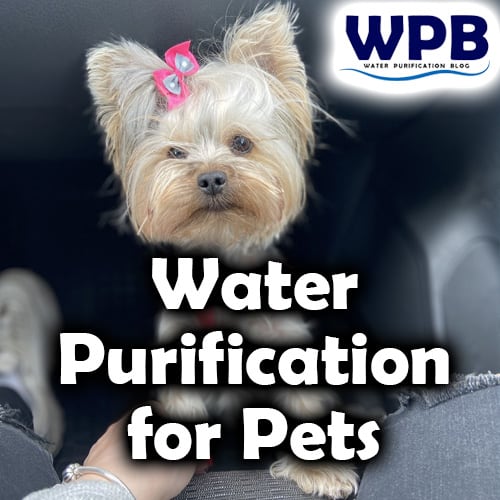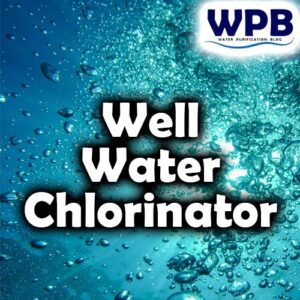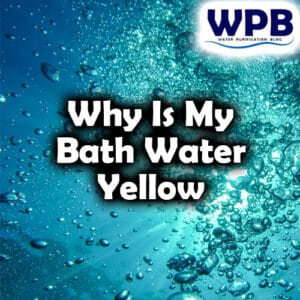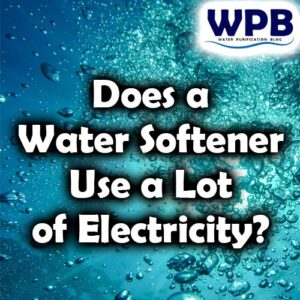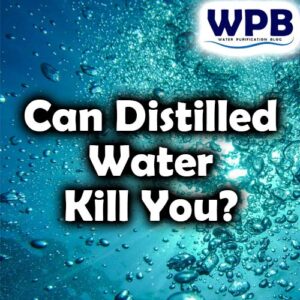Introduction
Water purification for pets is crucial in providing clean and safe drinking water for our pets. It is very important for their overall health and well-being.
Table of Contents
Just like humans, pets require access to fresh water to stay hydrated and maintain optimal health. In this comprehensive guide, we’ll explore the best water purification methods for pets and recommend top-rated pet water fountains.
The Role of Water for Pets’ Health
As responsible pet owners, it is our duty to ensure the health and well-being of our beloved furry companions. One of the most vital elements in safeguarding their health is water. Water plays a critical role in maintaining pets’ health, and it is imperative to understand its importance in regulating body temperature, lubricating joints, aiding digestion, and transporting nutrients throughout their bodies.
Regulating Body Temperature
Water is the primary component of a pet’s body, making up a significant portion of their cells and tissues. When pets become active or exposed to hot weather, they naturally lose water through panting and sweating. Adequate water intake helps them stay properly hydrated, which is crucial for regulating body temperature. By evaporating moisture from their mouths and skin, pets can cool down and prevent overheating.
Lubricating Joints
Just like humans, pets can experience joint discomfort and stiffness as they age. Proper hydration is essential for maintaining the health of their joints. Water acts as a lubricant for their cartilage and joint spaces, reducing friction and allowing smooth movement. By ensuring they drink enough water, we can help alleviate discomfort and promote joint flexibility, especially in older or arthritic pets.
Aiding Digestion
Water plays a significant role in the digestive process of pets. When they consume food, the body breaks it down into nutrients that can be absorbed and utilized. Water assists in this process by aiding in the digestion and absorption of nutrients in the gastrointestinal tract. Sufficient water intake also helps prevent constipation and ensures regular bowel movements, contributing to overall digestive health.
Transporting Nutrients Throughout the Body
The circulation of nutrients and oxygen is vital for a pet’s overall health and well-being. Water serves as a medium for transporting these essential elements through the bloodstream to various organs and tissues. It helps distribute nutrients to cells and aids in the removal of waste products from the body. This efficient nutrient transport system is essential for the proper functioning of bodily systems.
How Much Water Do Pets Need?
The amount of water a pet needs depends on various factors, including their size, age, activity level, and environmental conditions. As a general guideline, dogs should drink approximately 1 ounce of water (1/8 of a cup) per pound of body weight each day, while cats require around 50 ml per kg of body weight daily. However, individual circumstances can influence their water intake. Pet owners should not restrict their pets’ water consumption unless directed by a veterinarian. Instead, providing access to fresh, clean water at all times is essential.
Dehydration Risks
Failure to maintain proper hydration can have severe consequences for pets’ health. Dehydration occurs when a pet’s water intake is insufficient to meet their body’s needs. This condition can lead to a host of health problems and even become life-threatening if left untreated.
Common Causes of Reduced Water Intake
- Eating Wet Food or Homemade Diet: Pets fed canned food or homemade diets may receive some moisture through their food, leading to decreased water consumption.
- Illness or Pain: When pets are sick or experiencing pain, they may drink less water than usual. Identifying and addressing the underlying cause is essential in these situations.
- Hot Weather or Exercise: In warmer climates or during vigorous physical activity, pets may need more water to stay adequately hydrated due to increased panting and salivation.
Signs of Dehydration in Pets
It is essential for pet owners to recognize the signs of dehydration to take prompt action. Common signs include:
- Dry, sticky, or pale gums
- Dry nose and mouth
- Sunken eyeballs
- Sluggishness or lethargy
- Loss of appetite
- Dark or concentrated urine
Ensuring Sufficient Hydration
To prevent dehydration, pet owners can take several proactive steps:
- Provide Access to Clean Water: Always ensure that your pet has access to fresh, clean water. Keep their water bowl clean and refill it daily.
- Monitor Water Intake: Keep an eye on your pet’s water consumption and note any significant changes. Increased or decreased water intake could signal an underlying health issue.
- Offer Wet Food: If your pet is on a dry kibble diet, consider incorporating wet food into their meals to boost their water intake.
- Consider Environmental Factors: During hot weather or periods of increased physical activity, offer your pet more water to prevent dehydration.
- Consult a Veterinarian: If you suspect your pet is dehydrated or notice any concerning symptoms, seek immediate veterinary attention. Early detection and treatment can make a significant difference in their recovery.
Can Dogs Drink Tap Water?
In most cases, tap water that is safe for human consumption is also safe for dogs. However, some regions may have unsafe tap or well water due to contaminants or chemicals. In such cases, it is best to consult with a veterinarian and explore options for providing bottled or filtered water for your pet.
The Need for Water Purification
Understanding the Hazards of Water Contamination
Water is a vital resource for all living beings, including pets. However, due to factors such as rapid industrialization, urbanization, and improper utilization of natural resources, water quality has been compromised in recent decades [1]. Heavy metals and metalloids, including copper, cadmium, lead, and mercury, are among the most concerning contaminants found in water sources [1]. These toxic elements are released into the water from both natural and human-induced sources, and they pose serious health risks to pets.
Health Impacts of Water Contamination on Pets
Water contamination can lead to the bioaccumulation of heavy metals in pets, causing gradual increases in their concentration over time. These metals are not biodegradable, making them persist in the environment and potentially causing irreversible damage to various organs and systems in pets’ bodies [1]. Even at low concentrations, heavy metals can induce multiple organ damage, affecting vital organs such as the lungs, kidneys, liver, and more [1]. Additionally, they may lead to neurodegenerative disorders like Alzheimer’s and Parkinson’s diseases, posing serious threats to pets’ neurological health [1].
Apart from heavy metals, water contamination may also introduce pesticides and bacteria, further exacerbating health risks for pets. Pesticides are widely used in agriculture and can leach into water sources, leading to potential toxic effects on pets when ingested or absorbed through the skin [2]. Additionally, contaminated water may harbor harmful bacteria that can cause various illnesses and infections in pets.
The Importance of Providing Purified Water
Given the potential dangers of water contamination, providing purified water to our pets becomes paramount in safeguarding their health.
Purified water undergoes various filtration processes, removing harmful contaminants such as heavy metals, pesticides, and bacteria.
By ensuring that our pets have access to purified water, we significantly reduce their exposure to these harmful substances, minimizing the risk of health issues.
Best Methods of Water Purification for Pets
There are several methods available for purifying water, each offering effective ways to eliminate contaminants and ensure water safety for pets:
- Reverse Osmosis: This process utilizes a semipermeable membrane to remove impurities and contaminants from water, producing clean and purified water.
- Activated Carbon Filtration: Activated carbon filters effectively remove organic compounds, chlorine, and volatile substances from water, enhancing its taste and odor.
- UV Water Purification: UV light is used to disinfect water by killing harmful bacteria and pathogens present in the water, making it safe for consumption.
- Distillation: Distillation involves boiling water to produce steam, which is then condensed back into liquid form, leaving contaminants behind.
Understanding Water Purification Technologies
– Carbon Filter
Carbon filters, also known as activated carbon filters or carbon block filters, are highly effective water filtration systems used to remove impurities, bad odors, and chlorine from drinking water. These filters work based on the process of adsorption, which allows them to trap contaminants, ensuring that only clean water passes through. It is essential to understand the functioning of carbon filters, their limitations regarding heavy metal removal, and the significance of selecting the right carbon filter product.
– Reverse Osmosis
The process of pushing water through a fine membrane to remove contaminants is commonly known as membrane filtration. This technique utilizes semi-permeable membranes that allow certain molecules to pass through while blocking others based on size and molecular charge. One prominent application of this process is reverse osmosis, which is highly effective in eliminating various pollutants from water and producing clean, pure drinking water.
– Ultraviolet (UV) Purification
In today’s fast-paced world, access to clean and safe drinking water is of utmost importance. Various methods have been developed to ensure water disinfection, and one effective technique gaining popularity is Ultraviolet Germicidal Irradiation (UVGI). UVGI utilizes ultraviolet (UV) light, particularly UV-C, to inactivate microorganisms, making it a highly effective method for water disinfection. In this article, we will delve into the fascinating world of UV purification, exploring its history, efficacy, and applications.
Selecting the Right Water Purification System
Understanding the specific contaminants in your water is the first step towards choosing the right purification system for your pets. The water sources for pet owners can vary from private wells to public systems, each with its own set of potential contaminants.
Private Water Sources
If your water source is a private well or cistern, it’s essential to know about the common contaminants in your area. Reach out to your local health authority for information on potential contaminants, and ask them what specific contaminants to check for. Seek the assistance of a certified professional to test your water for total coliform bacteria, nitrates, total dissolved solids, pH levels, and other contaminants commonly found in your region. Identifying and addressing these contaminants will help you choose the appropriate water purification system.
Public Water Sources
For those connected to public water systems, the Environmental Protection Agency (EPA) mandates that public water systems provide a Consumer Confidence Report annually, detailing the quality of drinking water and its contaminants. Obtain and review this report to understand the potential issues with your water supply.
Checking for Certifications and Quality Standards
When it comes to water purification systems, ensuring their efficacy and reliability is crucial. Look for certifications and quality standards from reputable organizations to validate the system’s performance.
NSF International Certification
NSF International is an independent, accredited organization that tests, audits, and certifies products and systems for public health. They provide valuable resources to help consumers choose the right water filter system. Visit their Contaminant Reduction Claims Guide to find water filters certified to remove specific contaminants in your water source. Additionally, review the NSF Standards for Water Treatment Systems to understand the coverage of the NSF/ANSI certification for each water filter system.
Filtration Capacity and Maintenance Requirements
Different water purification systems come with varying filtration capacities and maintenance requirements. Consider your budget and lifestyle to find a system that suits your needs.
Point-of-Use (POU) Systems
Point-of-Use systems treat the water at the point of consumption. These systems include water pitchers, faucet filters, under-the-sink systems, and reverse osmosis systems. They are cost-effective and convenient for smaller households or specific areas of water consumption.
Whole-House/Point-of-Entry (POE) Systems
Whole-House/Point-of-Entry systems treat the water as it enters your residence. They are typically installed near the water meter (for municipal water) or pressurized storage tank (for well water). These systems provide comprehensive filtration for the entire household and are ideal for larger families or those seeking extensive water purification.
Tailoring the System to Your Pets’ Needs and Preferences
While addressing the contaminants in your water is essential, it’s equally important to consider your pets’ unique needs and preferences when choosing a water purification system.
Water Fountain Features
Pets, especially dogs and cats, are naturally attracted to flowing water. Consider investing in a high-quality water fountain that filters out toxins and aerates the water. Look for fountains that have replaceable charcoal water filters, are dishwasher safe, and feature a circulation system to encourage your pets to drink more water.
Quiet Operation
Some pets might be sensitive to noise, so opt for a water purification system that operates quietly, especially if you have skittish or easily startled animals. The Petkit Eversweet Smart Fountain, known for its three-stage filtration and quiet operation, could be a great choice in such cases.
Conclusion
Ensuring that your pets have access to clean and purified water is a vital part of their overall health and well-being. By understanding the specific contaminants in your water, checking for certifications, assessing filtration capacity, and considering your pets’ needs, you can select the most suitable water purification system. Remember, investing in a high-quality water purification system is an investment in your pets’ long-term health and happiness.
So, take the time to research and select the best water purification system that will not only safeguard your pets from potential waterborne health issues but also give you peace of mind as a responsible and caring pet owner.

Who am I?
I am working as a water treatment technical manager and I have more than 25 years of practical experience in water purification.
Water purification expert
After many years of experience in water purification, I want to share some of my knowledge and get people to know the real importance of water quality.
Water purification and water treatment are very complex themes, so it is important to explain them in an easy-to-read way.
On this blog, you will find many understandable, easy-to-read information about water purification.
I hope you enjoy it, find some useful information, and thank You for reading.
More info on my work and my expertise on water purification can be found on my LinkedIn profile.

